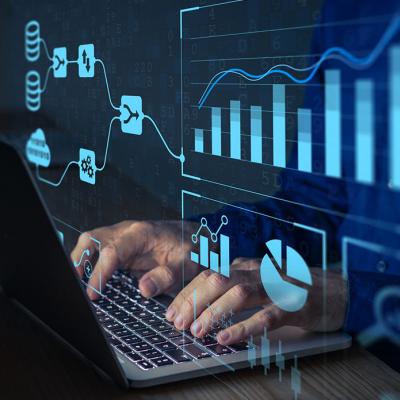IoT Solutions Help Solve Common Utility Challenges
IoT, or “Internet of Things,” is a nexus of technologies incorporating sensor-based data gathering and next-generation networking. The smart technology platform harnesses this IoT networking through the deployment of smart devices using advanced wireless technologies for remote monitoring and management of water networks.
This allows utilities to tackle problems facing the industry today, such as an aging workforce and the need for real-time water quality monitoring. Below are five common challenges utilities face that can be addressed with data-driven solutions.

Aging Infrastructure
Traditionally, utilities replaced parts of their water mains or distribution networks without having access to information about the condition of the pipes. In many cases, entire lengths of pipe were in good condition, with only parts of them needing immediate replacement. Gathering actionable data about the water network enables utilities to decide on rehabilitation schedules and the methods used, with focus on intelligent capital and operational expense planning and controls.
Aging/Retiring Workforce
With the average age of water utility operators currently standing at 55, water utilities face the retirement of a large portion of their workforce in the next 10 to 15 years. Along with the loss of skilled personnel will come the loss of system knowledge accumulated over their careers. IoT technologies will play a critical role in helping to avert this, through the capture, centralization and sharing of data that secure collective utility expertise for future generations of water network operators.
Non-Revenue Water Management & Leak Detection
Pressure is put on utilities to reduce water losses from both an environmental and financial standpoint. Robust, simple leak detectors and algorithms enable utilities to differentiate between abnormal consumption (e.g., a running tap or a home pipe break) and leak events in the network. This capability can help prioritize repair needs based on the severity and location of the leak.
Real-Time, Online Water Quality Monitoring
The advancements in online water quality sensors make it possible to monitor chlorine levels, pH and temperature in real time. Integrating such functionality with consumption and use-pattern data enables utilities to improve the operation of the water distribution system, as well as the service offered to their customers.
Interoperability of Smart Network Devices
Meters, sensors, leak detection and communication protocols are often installed from multiple vendors within one distribution network, as utilities are typically reluctant to rely on a single vendor. Solutions such as the LoRa communications platform and device-agnostic data analytics facilitate the integration of existing databases and smart networks with new solutions.





